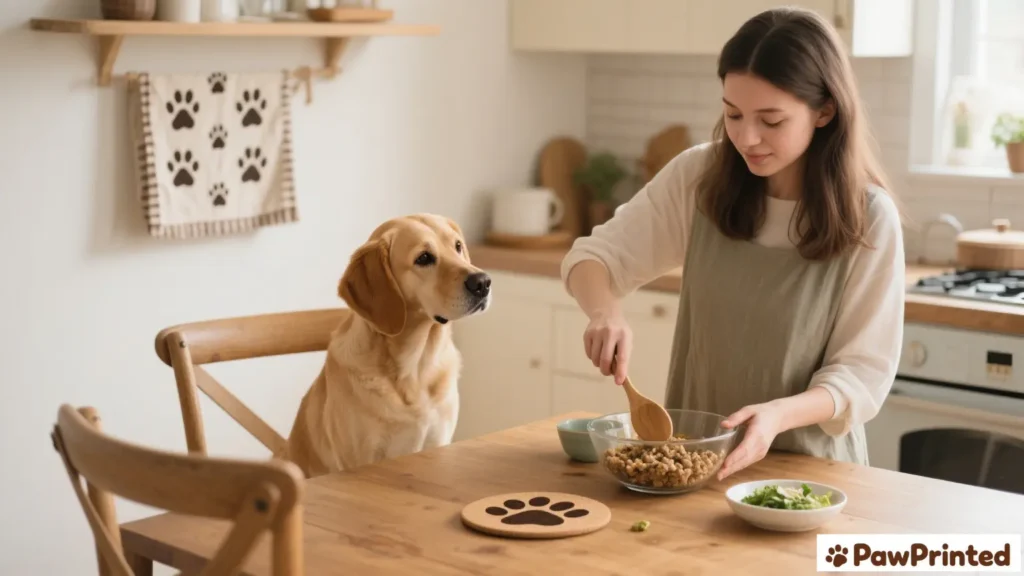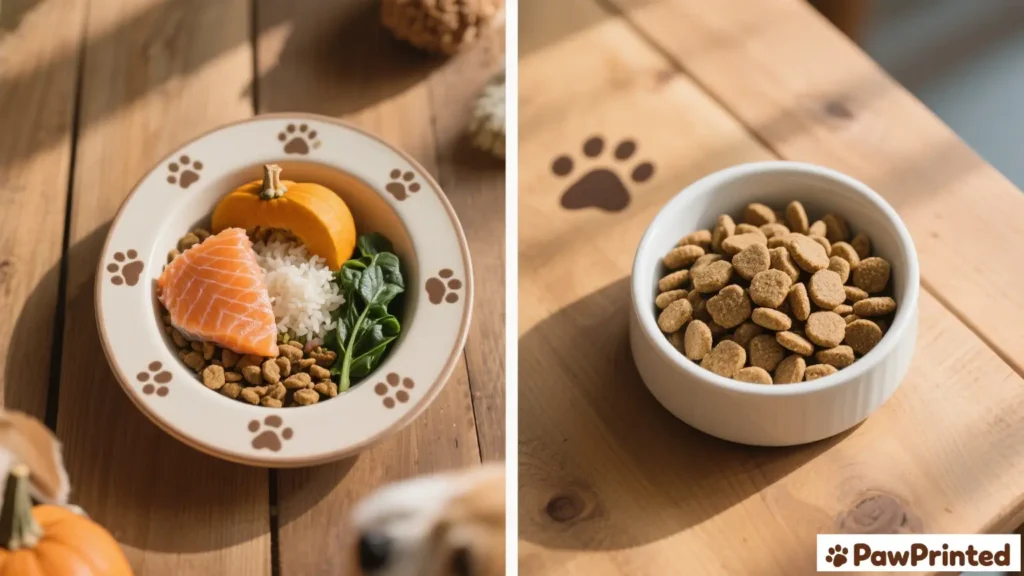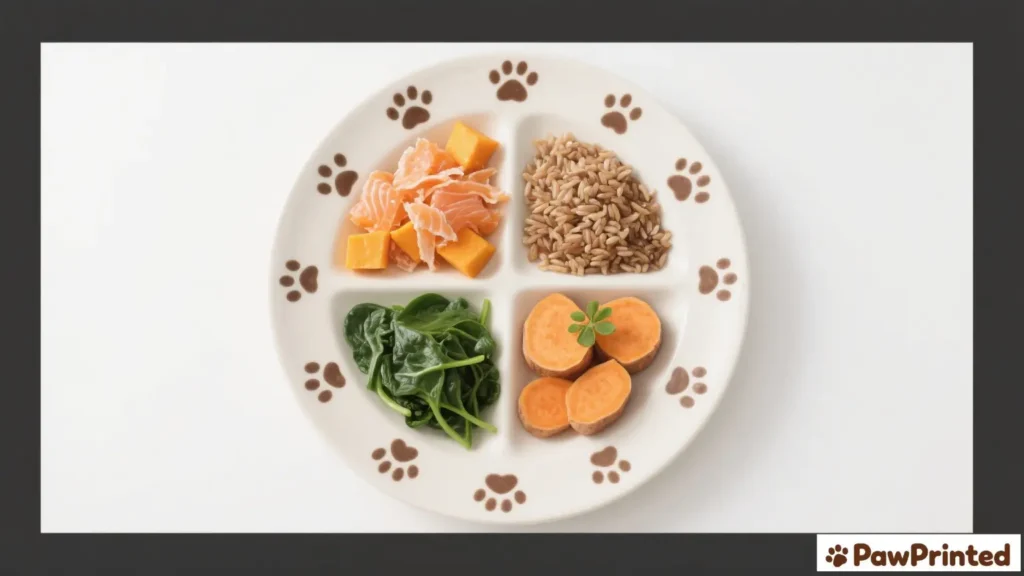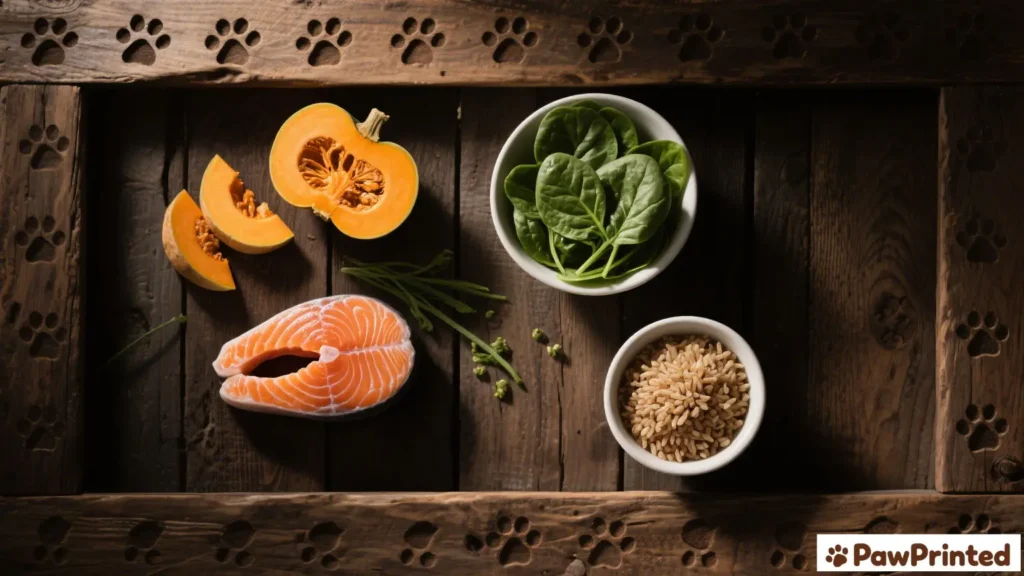On a rainy Wednesday, Ethan was doing that funny half-wag, half-“is-my-belly-okay?” walk. I had just opened a new bag of kibble, and the ingredient label read like a short grocery list—recognizable whole foods, no neon words. Over the next two weeks, stools normalized, gas settled, and he stopped leaving half the bowl untouched. That’s how our “natural dog food” experiment started: not as a trend, but as a quiet, steady fix that our routine could live with.
From there, I collected what worked in our house—options that stayed gentle on digestion, didn’t overcomplicate feeding time, and still felt like “real food.” If you’re in that same spot—curious, but also busy—this guide is for you.
A gentle, practical guide to choosing natural formulas that digest well, fit real life, and stay consistent with AAFCO’s “natural” definition.

What “Natural” Means (And Where It Helps)
“Natural” isn’t a magic badge—it points to minimally processed ingredients without artificial flavors or colors, and fats from natural sources. We still look for complete & balanced nutrition that meets AAFCO profiles, and we match formulas to a dog’s life stage (puppy, adult, senior) and sensitivities. When your dog has history of tummy trouble or itchy skin, natural recipes with simple, recognizable ingredients can make daily feeding calmer and more predictable.
⚠️ Red flags: sudden vomiting, black/tarry stools, blood in stool, rapid weight loss, or persistent diarrhea (>48 hours). See your vet first—diet alone shouldn’t “fight fires.”

What Worked In Our House (Natural Formulas We Reached For)
Below are the formulas that sat well with Ethan and stayed realistic for weekday life. I’ll describe why each one helped, then link the exact pick we used so you can skim quickly.
Hill’s Science Diet Puppy Large Breed — Chicken & Brown Rice
Gentle growth support for big pups: digestible grains, steady energy, and a clean label that didn’t rile up Ethan’s tummy. If your “little giant” needs predictable stools while growing fast, this balanced, no-fuss base is an easy daily anchor.
See the formula.
Blue Buffalo Life Protection Adult — Chicken & Brown Rice
A classic “natural everyday” bowl: recognizable protein + brown rice, with antioxidants from their LifeSource Bits. It’s the “doesn’t rock the boat” option for adult dogs who need consistency more than sizzle.
See the formula.
Wellness Complete Health Small Breed — Healthy Weight
For compact dogs who run hot on calories, this keeps portions honest without sacrificing whole-food feel (turkey & brown rice base). Ethan’s small-breed cousins stopped yo-yoing on weight with this as their “default.”
See the formula.
Nutro Natural Choice Small Bites Adult — Lamb & Brown Rice
Smaller kibble, easy chew, and a mild lamb profile that picky eaters often accept. If chicken stalls out appetite-wise, this gentle switch can get mealtime back on rails.
See the formula.
Merrick Lil’ Plates Small Breed — Salmon & Sweet Potato (Grain-Free)
A tidy, fish-forward option for small breeds who do better on grain-free. We used it as an “itch-calm” rotation during seasonal flare-ups.
See the formula.
Nature’s Logic Beef Meal Feast (All Life Stages)
No synthetic vitamins—amino acids and micronutrients come from food. It’s for people who love labels that read like a pantry and dogs that thrive on simple, consistent recipes.
See the formula.

Why “Natural” Needs A Little Extra Care
Natural labels feel reassuring, but they still need a fit check: life stage, protein tolerance, fiber type, and how fast you transition. If your dog has a track record with allergies or a sensitive stomach, consider limited-ingredient lines, and add gentle gut support from our probiotics guide. For age-specific needs, see our puppy and senior hubs, and if you’re curious about raw, start with the raw dog food guide before experimenting.
Further reading: AAFCO: how “natural” is defined, AKC: nutrition basics, PetMD: GI health.

Our Simple Routine (So It’s Easy To Stick To)
- Pick one predictable base (one of the six above). Stay on it for 10–14 days before judging.
- Transition slow: 25% new for 2–3 days → 50% for 3–4 days → 75% for 3–4 days → 100%.
- Watch the “two S’s”: stool shape & skin comfort. If both trend better, keep going.
- Layer support: If your dog is prone to tummy swings, check our probiotics picks.
- Keep a calm backup: When life gets messy, our dry sensitive picks keep stools predictable.

Comparison Table (Quick Skim)
| Option | Why It Helps | Best For |
|---|---|---|
| Hill’s Puppy Large (Chicken & Brown Rice) | Steady growth, gentle grains, predictable stools in big pups. | Large-breed puppies; sensitive tummies during growth. |
| Blue Buffalo Life Protection Adult | Everyday “natural” bowl with antioxidant blend; easy to stick with. | Adult dogs who do best on simple, consistent feeding. |
| Wellness Small Breed Healthy Weight | Controls calories without losing whole-food feel. | Small breeds; weight-watching without hunger drama. |
| Nutro Small Bites Lamb & Brown Rice | Mild lamb; smaller kibble helps picky or small-mouthed dogs. | Picky eaters; small mouths; chicken break-needed. |
| Merrick Lil’ Plates Salmon (Grain-Free) | Fish-forward, tidy on skin—nice seasonal rotation for itchers. | Small breeds; grain-free preference; seasonal skin support. |
| Nature’s Logic Beef Meal Feast | No synthetic vitamins; nutrient profile from food ingredients. | Owners who want “pantry-style” labels; steady, simple recipes. |
FAQ
Not always—but many natural recipes use gentle grains (like brown rice) or clean carb sources and avoid artificial colors/flavors that can agitate GI tracts. What matters most is the overall balance and how it fits your dog’s history. Transition slowly (10–14 days), watch stool shape and frequency, and keep a stable routine. If your dog has ongoing diarrhea or vomiting, pause changes and see your vet before tweaking diet again.
Choose the path that matches your dog’s past response. Many dogs thrive on whole-grain natural diets (brown rice/oats) because they deliver steady energy and predictable stools. Grain-free can help certain dogs with suspected grain sensitivities or specific skin/stool patterns. Either way, ensure the diet is complete & balanced, and monitor how your dog feels over at least two weeks before judging.
For stool and gas, many owners notice changes within 3–7 days if the formula is a good fit and the transition is slow. Skin and coat are slower—often 3–6 weeks. Keep portions consistent, avoid rapid protein hopping, and add one change at a time so you can tell what’s doing the work. If symptoms persist or worsen, check with your vet to rule out non-diet causes.
Yes—just be sure the bag explicitly meets the life-stage needs. Puppies need growth-appropriate calcium/phosphorus and higher protein; seniors often need digestibility plus joint/weight management. See our life-stage hubs: Puppy Dog Food and Senior Dog Food for picks and routines that respect age-specific needs.
Stay with one base formula and layer acceptance: smaller kibble (e.g., Nutro Small Bites), warm a splash of water for aroma, and keep feeding windows short. Picky-plus-itchy dogs sometimes accept fish-forward formulas better. If appetite truly drops for 24–48 hours, talk to your vet and consider a brief step-down to our gentle wet picks before moving back.
Think “one base, occasional guest.” Keep a mainstay that your dog thrives on, and rotate only when you have a reason (seasonal itch, boredom, stock issues). When rotating, do a 10–14 day blend, keep treats/water consistent, and don’t stack other changes (new supplements, big exercise jumps) in the same week. Stability makes “natural” work feel…natural.
If you don’t want to cook daily, check our dry food picks — those were Ethan’s daily backups: Best Dry Dog Food for Sensitive Stomach.
Wrapping It Up
Natural dog food shouldn’t feel like a project plan. Pick one steady base that fits your dog’s age and history, move slowly, and watch the two S’s—stool and skin. If you get stuck, step to something gentle (fish-forward or lamb-and-rice), then return to your natural mainstay when things settle. Quiet progress beats constant chasing.

